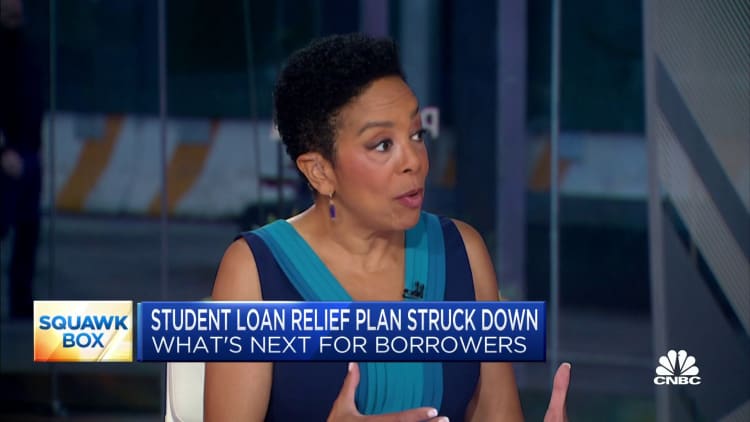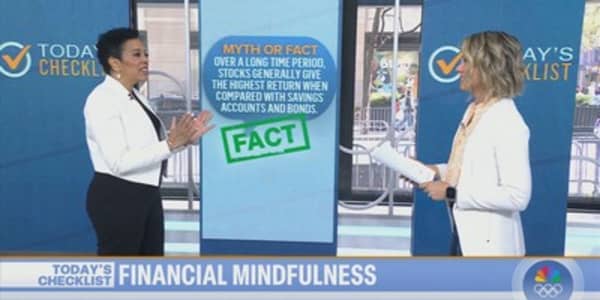
After the Supreme Court struck down the Biden administration's plan to wipe away about $430 billion in student loan debt, many borrowers are now scrambling to figure out exactly when their next payment is due, how much they owe and whether they'll be able to afford that bill.
President Joe Biden has promised to continue to work on a proposal to forgive student loan debt. Yet, "under the law, this path could take time," said U.S. Education Secretary Miguel Cardona, vowing to keep borrowers updated in the months ahead.
For now, the Biden administration is taking action to help provide some relief to borrowers by offering a more affordable income-driven repayment plan.
The new Saving on a Valuable Education, or SAVE Plan, will cut down the amount borrowers have to make on monthly payments by half — to just 5% of their disposable income, down from 10%. This new SAVE plan will replace the existing Revised Pay As You Earn, or REPAYE, plan and "will go into effect this summer," according to the U.S. Department of Education's website.
The department will also give borrowers a bit of a break if they can't make loan payments in the first year by not referring missed payments to credit reporting agencies for 12 months.
Here's what borrowers can do right now
Still, after a three-year pause, tens of millions of federal student loan borrowers will have to start making payments again in the fall. Interest will start to accrue Sept. 1, and payments will be due in October. To prepare, borrowers should take these five steps now:
- Make sure your contact information is current. Go to studentaid.gov — part of the Education Department's website — to update your contact information. You want to make sure you don't miss billing statements and due dates.
- Connect with your loan servicer. You want to make sure your loan servicer also has your most up-to-date contact information. Your loan servicer may have changed over the past three years or you may have moved. To find out who your loan servicer is, visit your account dashboard at studentaid.gov and scroll down to the "My Loan Servicers" section.
- Apply for an income-driven repayment plan. Many borrowers are already struggling financially. The Consumer Financial Protection Bureau estimates 1 in 5 borrowers are at financial risk of being unable to resume repayments. If you are trying to figure out how to afford those bills in October, apply for an income-driven repayment, or IDR, plan. You can find out more about IDR plans, including the new "SAVE" plan, here.
- Estimate your monthly payment and sign up for auto-debit. You can compare repayment plans and get an idea of what your monthly payment will be by going to the "Loan Simulator" tool here. This is also a good time to review whether you have signed up to auto-debit enrollment to ensure your payments are made on time. Contact your loan servicer directly to sign up to automatically deduct your monthly payment from your bank account. Even if you had auto-debit before the pause, confirm that you are enrolled once again with your payment plan.
- Open a high-yield savings account. Start making loan payments to yourself now by stashing money in a high-yield savings account. You can go here to find financial institutions offering the most competitive savings rates. Putting money in a savings account, earmarked for student debt payments, can be good practice to see how you'll handle paying those bills when they're due again in October.






